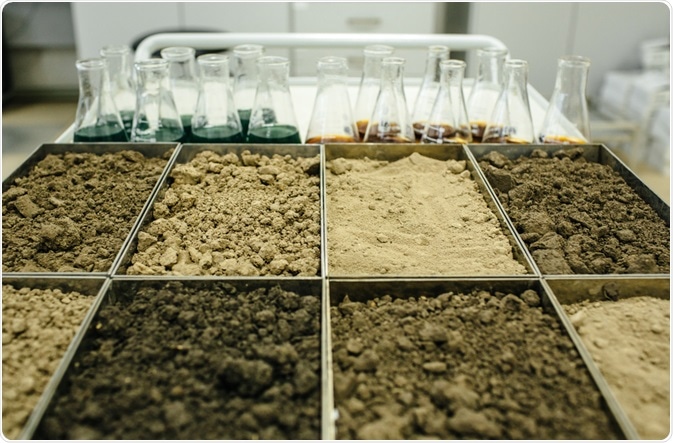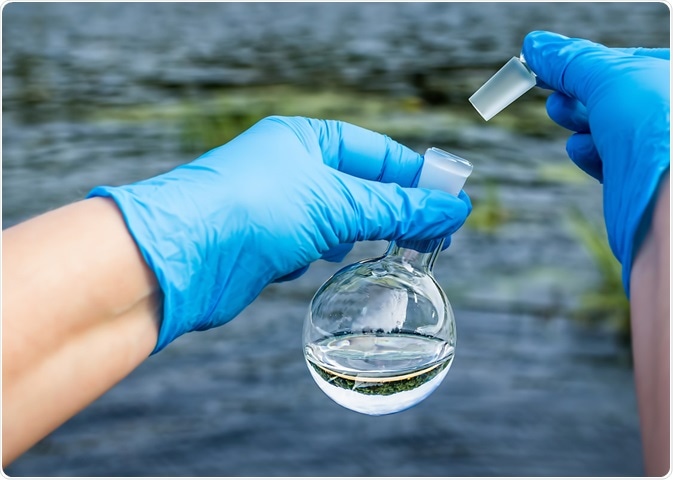Humans have had a significant effect on the natural world. Our activities have had wide-reaching and long-lasting consequences for the planet. Pollutants can be found in all environments, and come from sources such as landfill sites, pesticides, and industrial waste. To effectively mitigate damage caused, effective monitoring programs must be designed.
 Image Credit: VAKS-Stock Agency / Shutterstock.com
Image Credit: VAKS-Stock Agency / Shutterstock.com
Environmental Monitoring – An Overview
Environmental monitoring is a term that describes the activities and processes which are required to monitor and characterize environmental quality. Used to prepare environmental impact assessments as well as playing a role in monitoring situations where human activity has the potential to cause harm to natural environments, it is an important field of environmental science.
The current status of an environment and trends in environmental parameters need to be established if an environmental monitoring strategy is to be effective. To this end, a monitoring strategy will have reasons and parameters which are designed to establish these variables. The results of any monitoring strategy are reviewed, statistically analyzed, and published. Any monitoring program’s design must therefore bear in mind the use of data before it can start.
Environmental monitoring is carried out for air, soil, and water quality monitoring purposes. There is a multitude of different monitoring processes that can be employed by scientists working in the field. One important element of any monitoring process, as in any scientific study, is the need to categorize and analyze any compounds present within a sample. There are a multitude of laboratory-based techniques that can be employed for this purpose.
Chromatography – An Effective Lab-Based Technique for Environmental Monitoring Purposes.
Identifying the contaminants present in an environment can be challenging. In any given sample there is a variety of compounds with different chemical compositions. Also, there can be unknown contaminants due to degradation or transformation processes. Therefore, robust, fast, cost-effective analytical techniques are required in environmental analysis. Chromatography (especially when paired with mass spectrometry) is a technique that is well suited to this purpose.
There are many different chromatography methods that can be employed in the lab for environmental analysis and monitoring. Chromatographic methods can either be planar or column-based. Different chromatography techniques are suitable for different studies and analytical purposes.
Gas chromatography (GC) methods are used to analyze volatile and non-polar compounds. Liquid chromatography (LC) methods are employed in environmental analysis and monitoring for compounds such as those which are polar, non-volatile, thermolabile or compounds with a high molecular weight. Most LC used for this purpose is high-performance liquid chromatography (HPLC) where small particles are packed together at high pressure and forced through the chromatographic equipment.
 Image Credit: Mr_Mrs_Marcha / Shutterstock.com
Image Credit: Mr_Mrs_Marcha / Shutterstock.com
Improving Chromatography Methods for Environmental Monitoring
As the number of complex mixtures present in an environment that are potentially caused by contaminants can be vast, there is a constant need for improvements to chromatography techniques.
Effective sample preparation methods are vitally important for any analytical study. Sample preparation methods such as QuEChERS, which is used for multi-residue and pesticide analysis in food, have been developed in recent years. Even the method of sample storage can be vital if a compound is to be accurately analyzed. In ion chromatography analysis, samples must be stored in plastic containers as glass containers can cause ionic contamination.
Interference in environmental analysis is also a problem. This is due to the variety of compounds present within a sample which can interfere with each other due to factors such as size and molecular weight. Therefore, clean-up is necessary during the sample preparation stage, which adds to the analysis time. Turbulent flow chromatography is a high throughput technique that mitigates the need for clean-up. It is also highly cost-effective.
Separation can be improved by experimenting with different separation phases. A widely applicable and easy to use stationary phase is alkylsiloxane-bonded silica. This can separate highly polar compounds that are present in contaminated environments.
The coupling of LC to high-resolution mass spectrometry in recent years has led to a huge improvement in environmental analysis and monitoring. This has allowed improved screening of compounds expected to be in the sample as well as compounds such as transformation protocols in samples such as wastewater and sewage.
There has also been a focus on achieving real nontarget analysis of unknown factors in environmental analysis. This will provide a vastly improved and comprehensive view of the true level and types of contaminant in environmental samples.
Finally, the development of new software tools, spectra libraries, and databases is improving the ability of chromatography techniques to provide accurate data on compounds present in environmental samples. All of these improvements in the field mean that chromatography is ever more useful and relevant in the field of environmental monitoring.
Sources
Mattarozzi, M & Careri, M (2015) Liquid Chromatography/Mass Spectrometry in Environmental Analysis Encyclopedia Anal. Chem [Accessed Online 6th January 2021] https://onlinelibrary.wiley.com/doi/10.1002/9780470027318.a0840.pub2
Afghan, B.I. & Wolkoff, A.W (1981) High Performance Liquid Chromatography in Environmental Analysis: Present and Future Applications Journal of Liquid Chromatography 4:sup 001 pp. 99-139 [Accessed Online 6th January 2021] https://www.tandfonline.com/doi/abs/10.1080/01483918108069353
Jackson, P.E (2000) Ion Chromatography in Environmental Analysis Encyclopedia Anal Chem. pp. 2779-2801 [Accessed Online 6th January 2021] www.unil.ch/.../Jackson_2000.pdf
Santos, F.J & Galceran, M.T (2002) The application of gas chromatography to environmental analysis TrAC Trends in Analytical Chemistry 21:9-10 pp. 672-685 [Accessed Online 6th January 2021] www.sciencedirect.com/science/article/abs/pii/S0165993602008130
Further Reading
Last Updated: Jan 12, 2021